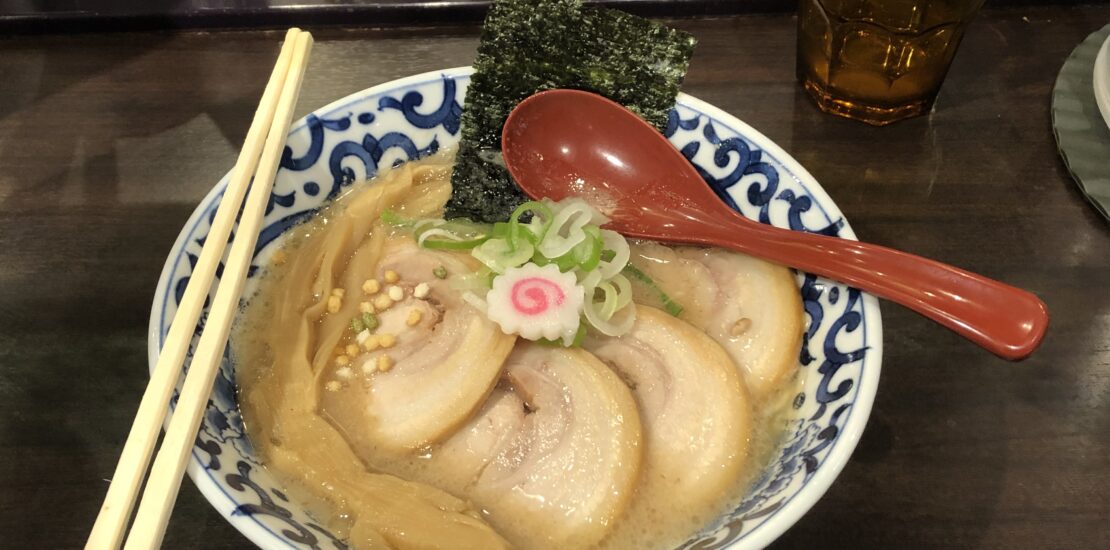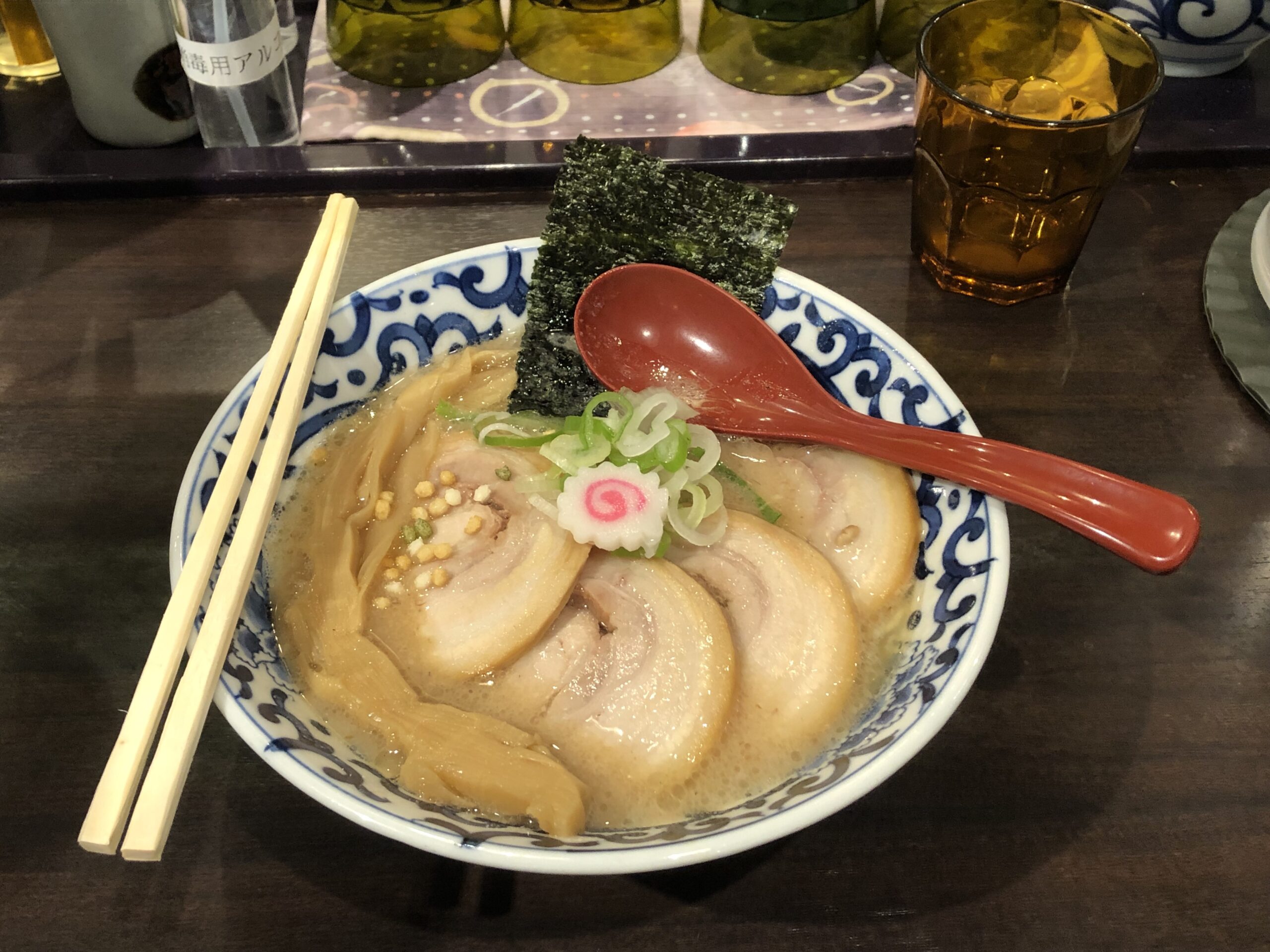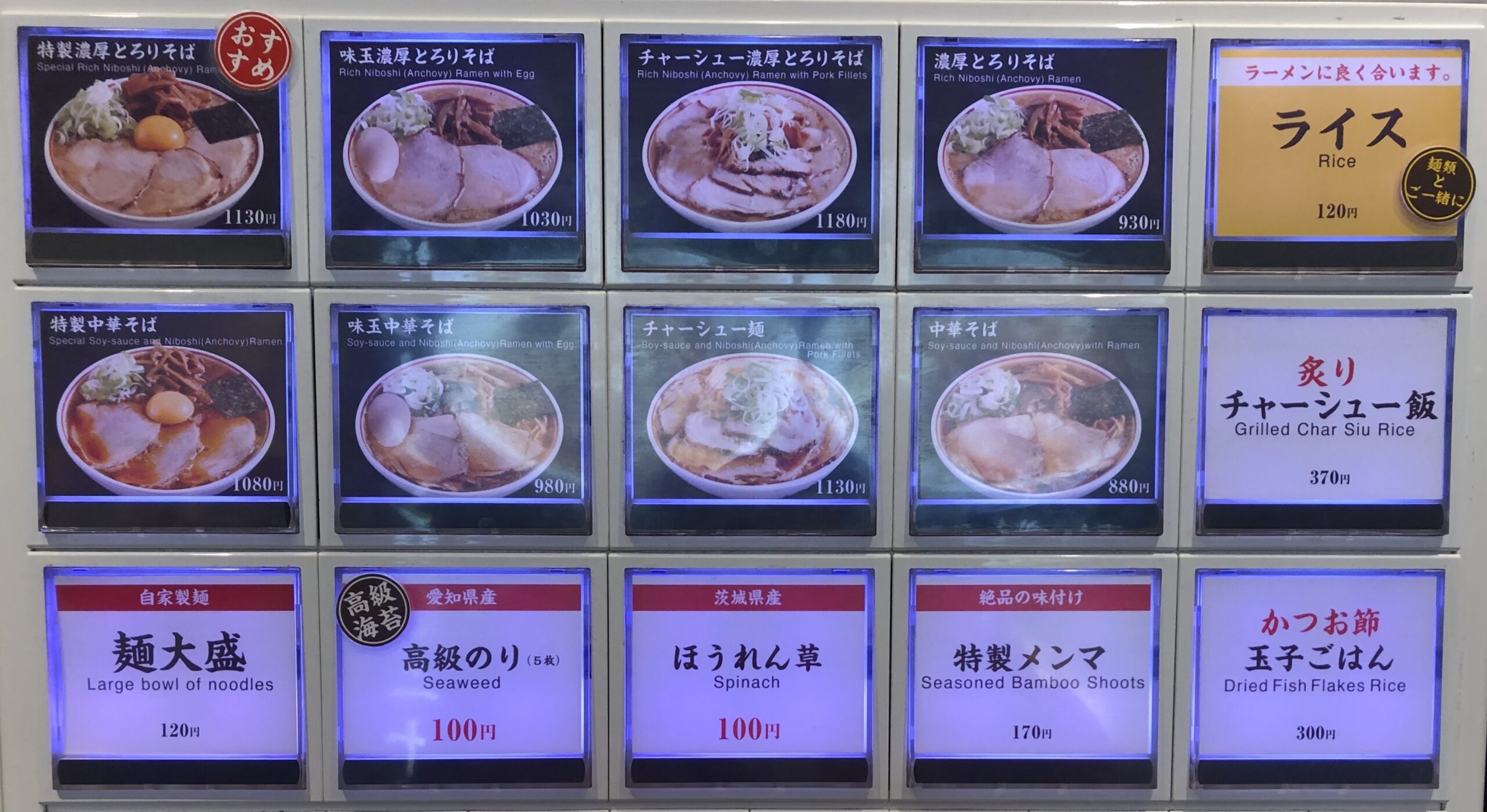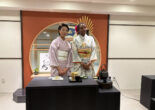Hankering for a bowl of ramen? Take a look at this straightforward guide on everything you need to know about that delicious bowl of noodles.

One of the first things you may find yourself craving the minute you take your first step out of the airport and into Tokyo is a delicious bowl of ramen. Luckily, there seems to be a tasty ramen shop just waiting to be discovered around every street corner!
When it comes to trying out new restaurants, I prefer to have as much information as possible, especially when it comes to unfamiliar cuisines and dining customs. In this article, you’ll find everything you need to know about ramen – from its history and the different types of soup broth to ordering and eating etiquette.
A Short History of Ramen

When looking into the history of Ramen, it was likely introduced around the end of the Edo period when port cities like Kobe, Yokohama, and Nagasaki began to become populated with foreigners from around the world. As time flowed on into Meiji Era, Chinese immigrants’ influence on food began to grow, and restaurants began popping up in and out of big cities like Yokohama and Tokyo. One of the very first popular ramen shops based in Asakusa, Tokyo was called Rairaiken (来々軒) and paved the way for more Chinese noodle shops in the upcoming years (Okuyama, 2003).
Different Types of Ramen Broth & Noodles Explained

Ramen is arguably most known for its showstopping soup base and if given the option, this author would have difficulty choosing a favorite type. The four most popular soup-base types are:
-
Tonkotsu: a rich and creamy soup base made with pork bone broth.
-
Shoyu: a salty and savory soup base made with soy sauce and other seasonings.
-
Miso: a thick and hearty soup base made with fermented soybean paste
-
Shio: a light and clear soup base made with salt and dashi (a broth made from fish and seaweed).
There are also quite a few other types worth mentioning like curry and seafood soup base. It goes without saying that you can’t even begin to discuss ramen without mentioning its second showrunner: noodles. While there is much to say about these heavenly strands of dough, I’ll try to keep it brief so we can get to the slurping!
Typically ramen noodles are made by using a combination of wheat flour and incorporating brine in the mix. There are many different textures, shapes, and even widths of noodles in the ramen world! Before moving to Japan, I used to think that all noodles were the same. However, after visiting popular ramen joints like Ichiran, I quickly learned that there’s a vast market for different noodle preferences! When it comes to classifying noodles I think it’s important to mention how you may find it on the menu:
-
Thin noodles: 細麺 / ほそめん (hosomen)
-Delicate fine noodles that are great for lighter broths and allow the soup and toppings to take center stage.
-
Medium thin noodles: 中細麺 / ちゅうほそめん (chuhosomen)
-These are slightly thicker than hosomen and have a bit more texture which helps hold up in a variety of different broth bases.
-
Medium thick noodles: 中太麺 / ちゅうふとめん (chufutomen)
-Chewey and hearty, these noodles are popular for rich broths and pork-based broths like tonkotsu.
-
Thick noodles: 太麺 / ふとめん (futomen)
-These are fat and robust noodles and a great for thick heavy broths and also hold up well in dishes like abura soba and tsukemen, noodle dishes without broth, or served on the side.
Best Ramen Toppings to Try

No bowl of ramen is complete without the perfect combination of toppings. Generally, a bowl of ramen comes with a standard set of toppings such as bamboo shoots, fish cake, and a sheet of nori or seaweed. It’s important to take note of what comes with your bowl of ramen before ordering additional toppings to avoid doubling up on anything. Nonetheless, feel free to indulge in an extra serving of your favorite toppings like egg or seaweed. To help you navigate the endless options, here are some of the most common toppings you’ll find served with ramen:
-
Egg / 卵 / たまご (tamago)
-
Green onion / ネギ (negi)
-
Bamboo shoots / メンマ (menma)
-
Vegetables 青物 / あおもの (aomono)
-
Seaweed 海苔 / のり (nori)
-
Wood Ear Mushroom / キクラゲ (kikurage)
-
Corn / コーン (kon)
-
Garlic / ニンニク (ninniku)
-
Naruto roll or fish cake / 鳴門巻き / なるとまき (naruto maki but also called kamaboko in its plain form)
How to Order Ramen Like a Pro

Visiting a new restaurant in a foreign country can be a little daunting at first especially when ordering styles may be different depending on the place, luckily there’s not too much to worry about when it comes to ordering ramen. The ordering formula tends to stay the same among most places so don’t let the stress of the unknown deter you from a life-changing bowl of the ramen!
One of the first things you’ll find in your ramen shop of choice is a ticket machine with various menu items displayed. This will be your first stop before taking a seat. Here you’ll find the standard menu items as well as the most popular ramen around the top area while the extra toppings and other food options will be displayed underneath. Simply insert your money and press the button corresponding to your desired choice. Often, older machines won’t let you pick multiple items at once before spitting your change out so just re-insert your money and continue picking items if you plan on getting a plate of gyoza or refreshing beer alongside your ramen.
Pro Tip: An important kanji to look out for is the word “omori” (大盛り), which means large serving. I don’t want to tell you how many times I’ve accidentally ordered a large portion of ramen without realizing.
After getting your change and order tickets, a member of staff will take your tickets once you sit down at the counter or table. Here you’ll find an assortment of extra toppings to add to your ramen as well as chopsticks, hand wipes, tissues, and usually a giant pitcher of ice water to self-pour in a plastic water cup, usually stacked atop the counter. Once your ramen arrives it’s time to dig in! While there’s no wrong way to enjoy ramen, here are a few tips for ramen etiquette you may want to consider:
-
Hang your jacket and stow away your bags in the supplied spaces under the counter in order to not create a disturbance in the shop.
-
Slurp away! An unspoken way of enjoying ramen is slurping your noodles and it’s often considered a sign that you’re enjoying the meal.
-
Try the broth first before adding extra condiments and then adjust to your preference.
-
Try your best to finish your food. It’s commonly considered rude to leave uneaten food on your plate in Japan.
-
Place your bowl on the counter once finished (although if you’re not seated at the counter you may disregard this rule).
Ordering and enjoying ramen doesn’t have to be difficult! With so many flavors and variations to try, you’ll be ready to boast about your favorite ramen join in no time!



